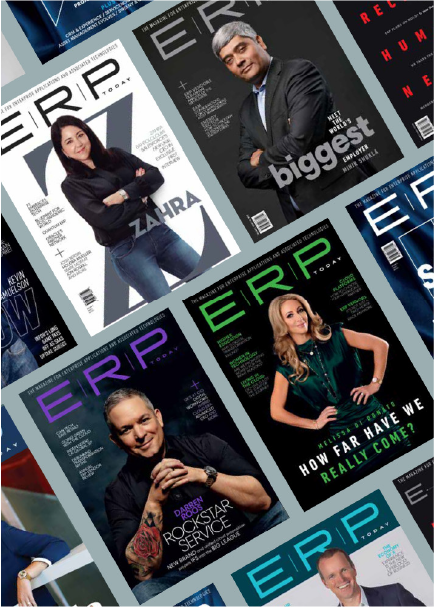 With bet after bet being placed on AI agents and autonomous ERP, Vara Kumar, co-founder and Head of R&D at Whatfix, is betting on something more foundational: digital adoption. In an insightful interview with ERP Today, Kumar lays out a vision that goes beyond walk-throughs and tooltips. It’s about enabling humans and agents to co-navigate enterprise software—and it’s about doing so with data, context, and personalization at the core.
With bet after bet being placed on AI agents and autonomous ERP, Vara Kumar, co-founder and Head of R&D at Whatfix, is betting on something more foundational: digital adoption. In an insightful interview with ERP Today, Kumar lays out a vision that goes beyond walk-throughs and tooltips. It’s about enabling humans and agents to co-navigate enterprise software—and it’s about doing so with data, context, and personalization at the core.
“Enterprise software was never really built for the individual user,” Kumar says. “It was designed for roles, for groups. But digital adoption is about reversing that assumption and making software work for every person, across every application.”
Whatfix currently offers three core products: its flagship digital adoption platform (DAP), a usage analytics engine that tracks behavior across applications, and a sandboxed mirror environment for risk-free practice. But the bigger story is how Whatfix is preparing for the shift to agentic AI. As Kumar puts it, “Agents are getting smarter, but we still need human-in-the-loop design. The future is about seamless handoff between agents and users—and that means working in the same interface, on the same terms.”
According to Kumar, digital adoption is still misunderstood. “CIOs often believe one-time training or a few webinars is enough. But true adoption is ongoing. It’s embedded in the workflow, not outside of it.” He cites a global brewery and a leading retailer as examples where Whatfix enabled just-in-time, context-aware guidance that dramatically improved outcomes during ERP rollouts.
Another common blind spot? The data. “Too many teams rely on qualitative feedback and miss the power of usage data. If you don’t know what people are struggling with, you’ll never fix it.”
Whatfix helps surface those pain points with heatmaps, drop-off reports, and workflow analytics. This visibility is critical, especially as SaaS upgrades and new features arrive more frequently than ever. “Change is no longer an event. It’s continuous. And adoption has to be continuous, too.”
As ERP architectures evolve from monoliths to composable stacks, Whatfix sees an opportunity. “Every module behaves differently. Every UI is slightly off,” Kumar explains. “We act as the unifying layer across all these systems.”
Indeed, Whatfix is platform-agnostic, operating across browser, desktop, mobile, and even OS-level applications. This matters when an enterprise ERP estate includes dozens of applications and microservices. In one case, Kumar notes, “A customer had over 70 apps in their ERP stack. They needed a vendor-neutral experience layer.”
Unlike built-in tools from major ERP providers, Whatfix’s sole focus is adoption—and that translates into deeper innovation. It’s this specialization, Kumar argues, that sets Whatfix apart.
Whatfix has quietly integrated generative AI into its product, but it avoids the hype. “Text generation, image generation, even basic code suggestions—these are real, valuable uses. But the dream of agents autonomously navigating all your apps? That’s still on the horizon.”
Instead, Whatfix focuses on pragmatic enhancements: surfacing company-specific knowledge in real time, drafting user guidance, and enabling creators to design workflows faster. More than 200 customers have adopted Whatfix’s new GenAI features in the past year.
Kumar sees this as a bridge. “Eventually, agentic systems will be more autonomous. But today, users still need to know when to invoke a copilot, when to act on their own, and how to switch back and forth. We help manage that choreography.”
What this means for ERP Insiders
Prioritize adoption as a continuous discipline, not a launch event. Digital transformation leaders must move beyond “go-live” mindsets. Whatfix helps ERP teams embed training, reminders, and contextual help into the flow of work, improving change absorption across distributed teams. Customers in retail and manufacturing have used Whatfix to reduce support queries and boost process compliance during high-stakes rollouts.
Standardize UX across fragmented ERP stacks. As enterprises adopt composable ERP, they need consistency in user experience. Whatfix serves as a layer of guidance that spans SAP, Oracle, Workday, and homegrown systems—ensuring that no matter the backend, users receive the same intuitive, branded support.
Leverage behavioral data to drive real adoption gains. With built-in analytics, Whatfix reveals where users drop off, hesitate, or bypass key steps. This data enables teams to tune workflows and target improvements. One enterprise used this insight to cut onboarding time by 40% and reduce ERP-related help desk tickets by 25% in a single quarter.




